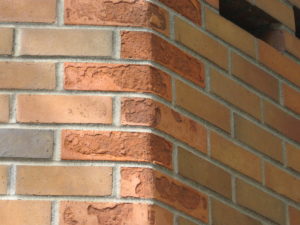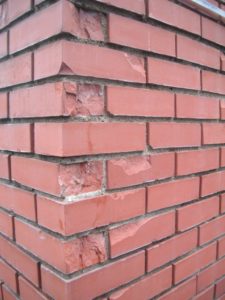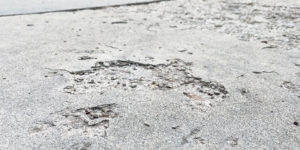Understanding Freeze-Thaw Cycles: Why It Matters to Your Clients and Their Buildings
Freeze-thaw cycles can significantly impact facades, leading to accelerated deterioration, costly repairs, and even structural failures over time.
As a comprehensive building envelope service provider, you can communicate to your clients that addressing freeze-thaw damage is not just about reactive repairs but also proactive prevention. By helping them understand the risks, providing proactive LIFECYCLE360 inspections, and performing preventative maintenance, you become their trusted partner who protects their assets, increases the long-term durability of their buildings, and minimizes costs.
Here’s what you need to know to guide your clients effectively.
What Are Freeze-Thaw Cycles?
Water enters through the face of building materials via cracks, holes, and pores, traveling inward through capillary action. While some water moves back toward the exterior due to forces like evaporation, thermal vapor drive, or gravity, a portion of it often remains trapped in small internal pockets. Even in temperatures well above freezing, this lingering moisture can cause deterioration, corrosion of embedded steel reinforcement, and increased mold growth due to elevated moisture levels. But, the problems intensify as temperatures drop and the trapped water freezes.
The water freezes at 32˚F (0˚C), expanding approximately 9% of its volume as it transitions from liquid to solid. This change in volume creates significant internal pressure within building materials such as concrete, masonry, and other porous surfaces. The pressure caused by the expansion of water during freezing widens existing cracks, creates new ones, and causes spalling (the breaking or flaking of material surfaces).



Why Freeze-Thaw Cycles Are a Concern for Your Clients
In regions with severe winters, water that freezes may remain solid for months at a time. However, in many parts of North America, daily freeze-thaw cycles are common during winter months, with temperatures fluctuating above and below freezing. This back-and-forth movement caused by freezing and thawing creates significant stress on building materials. Over time, this leads to:
- Widening cracks and increased water intrusion.
- Spalling of material surfaces, resulting in aesthetic and structural damage.
- Accelerated deterioration of porous materials like concrete and masonry.
- Potential structural failures due to compromised material integrity.
For building owners and managers, this means higher maintenance costs, increased risk of damage, and potential safety concerns.
How to Prevent Freeze-Thaw Damage
The good news is that proactive maintenance to porous surfaces can prevent excessive moisture intrusion and mitigate the effects of freeze-thaw cycles. Best-practice preventative measures include:
- Masonry Repointing: Repairing deteriorated mortar joints to reduce water infiltration.
- Crack Repairs: Sealing existing cracks to prevent water from entering and freezing.
- Spall Repairs: Addressing surface flaking and breakage to restore material integrity.
- Waterproof Coatings: Applying protective coatings to create a barrier against moisture.
- Clear Water Repellents: Using water repellents to reduce moisture absorption without altering the appearance of the building material.
Freeze-thaw cycles may seem like a natural, unavoidable phenomenon, but their impact on buildings can be reduced with proper care. By educating your clients, identifying vulnerabilities during proactive LIFECYCLE360 inspections, and performing preventative maintenance, you can help them protect their buildings against the relentless effects of freezing and thawing.